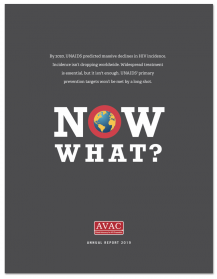A new episode of our Px Pulse podcast is ready for download!
What’s all the fuss about F/TAF? Listen to this episode for a snapshot of the issue and a preview of what will take much of AVAC’s – and our partners’ – attention in 2020. The US Food and Drug Administration (FDA) approved F/TAF (Descovy) as daily oral PrEP in October 2019. But there’s was one notable caveat: the label excluded those who are at risk from “receptive vaginal sex”, indicating that more data is needed for the drug to be approved as HIV prevention for cisgender women. The FDA’s supplemental approval requires Gilead to conduct a safety and efficacy trial in cisgender women to produce the lacking data by 2025, with a draft trial protocol before the end of this year.
As Gilead drafts the protocol, civil society, advocates, communities and all stakeholders must engage with planning for this trial from A-Z. In this episode, we look at what’s different and what’s the same between F/TDF (Truvada) and F/TAF, what’s driving innovation in the proposed trial design, why it’s so essential for advocates to engage and more.
For the full podcast episode, highlights and resources, visit avac.org/px-pulse. And subscribe on Apple Podcasts, Spotify or wherever you get your podcasts!
